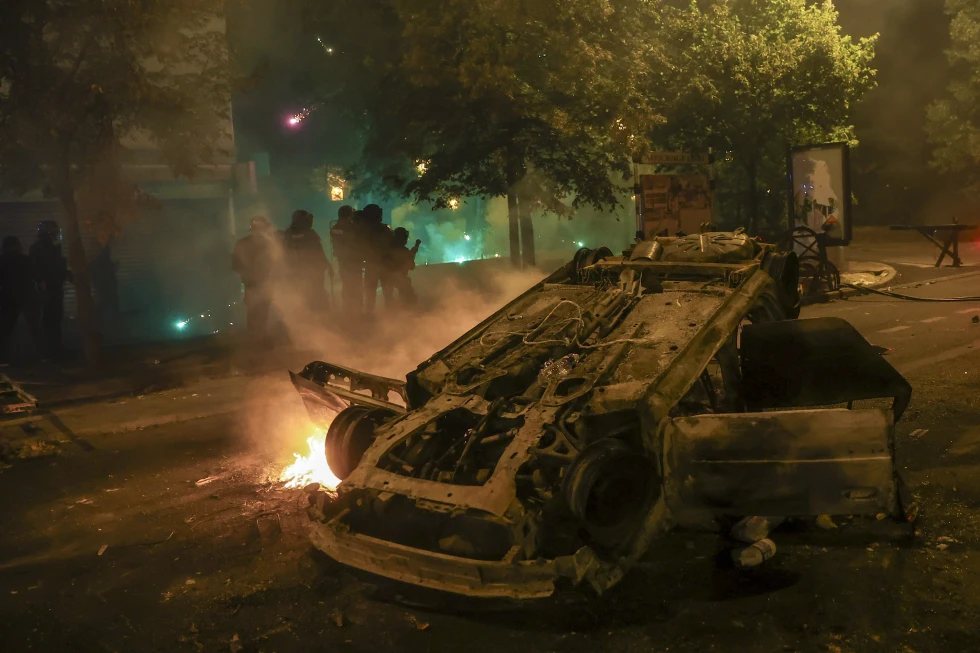Despite government appeals for calm and vows that order would be restored, smoke billowed from cars and garbage set ablaze in the Paris suburb of Nanterre following a peaceful afternoon march in honor of the teen identified only by his first name, Nahel.
After a morning crisis meeting following violence that injured dozens of police and damaged nearly 100 public buildings, Interior Minister Gerald Darmanin said the number of officers in the streets would more than quadruple, from 9,000 to 40,000. In the Paris region alone, the number of officers deployed was more than doubled to 5,000.
“The professionals of disorder must go home,” Darmanin said. While there’s no need yet to declare a state of emergency — a measure taken to quell weeks of rioting in 2005 — he added: “The state’s response will be extremely firm.”
There were 100 arrests nationwide Thursday night, according to a national police spokesperson, as officials reported scattered clashes in cities across the country despite the stepped-up deployments.
In the usually tranquil Pyrenees town of Pau in southwestern France, a Molotov cocktail was thrown at a new police office, national police said. Vehicles were set on fire in Toulouse and a tramway train was torched in a suburb of Lyon, police said. Paris police said its officers made 40 arrests Thursday, some on the margins of the largely peaceful memorial march for the teen and others elsewhere.
The interior minister had reported 180 arrests nationwide before Thursday.
Bus and tram services in the Paris area shut down before sunset as a precaution to safeguard transportation workers and passengers.
The town of Clamart, home to 54,000 people in the French capital’s southwest suburbs, said it was taking the extraordinary step of imposing an overnight curfew from Thursday through Monday, citing “the risk of new public order disturbances.” The mayor of Neuilly-sur-Marne announced a similar curfew in that town in the eastern suburbs.
Marseille, the giant port city in the south of France, saw the beginnings of unrest Thursday evening, with several hundred young people roaming the city center and setting fire to trash containers, including in front of the region’s main administrative building, police said. Around 1 a.m. local time, regional officials tweeted that police were trying to disperse violent groups in the city center. Police said they had made 28 arrests, though they gave no time frame.
The unrest extended even to Brussels, where about a dozen people were detained during scuffles related to the shooting in France. Police spokeswoman Ilse Van de Keere said that several fires were brought under control and that at least one car was burned.
The shooting captured on video shocked the country and stirred up long-simmering tensions between police and young people in housing projects and other disadvantaged neighborhoods.
The teenager’s family and their lawyers haven’t said the police shooting was race-related and they didn’t release his surname or details about him.
Still, his death inflamed raw nerves in neighborhoods that have welcomed generations of immigrants from France’s former colonies and elsewhere. Their France-born children frequently complain they are subjected to police ID checks and harassment far more frequently than white people or those in more affluent neighborhoods.
Anti-racism activists renewed their complaints about police behavior.
“We have to go beyond saying that things need to calm down,” said Dominique Sopo, head of the campaign group SOS Racisme. “The issue here is how do we make it so that we have a police force that when they see Blacks and Arabs, don’t tend to shout at them, use racist terms against them and in some cases, shoot them in the head.”

